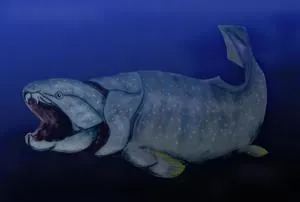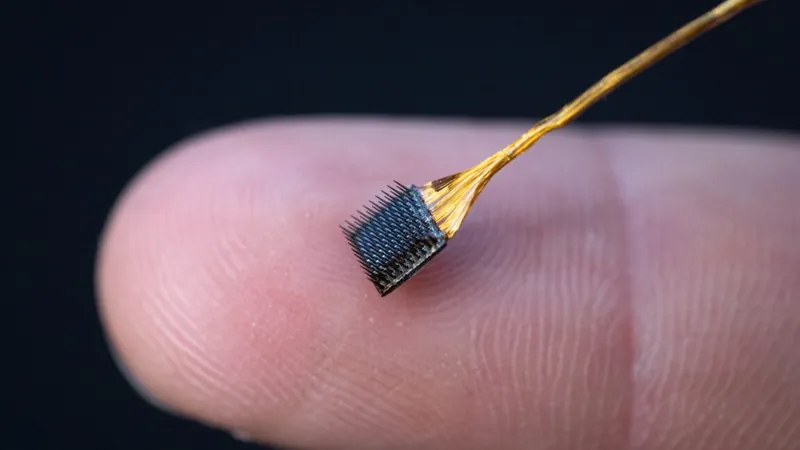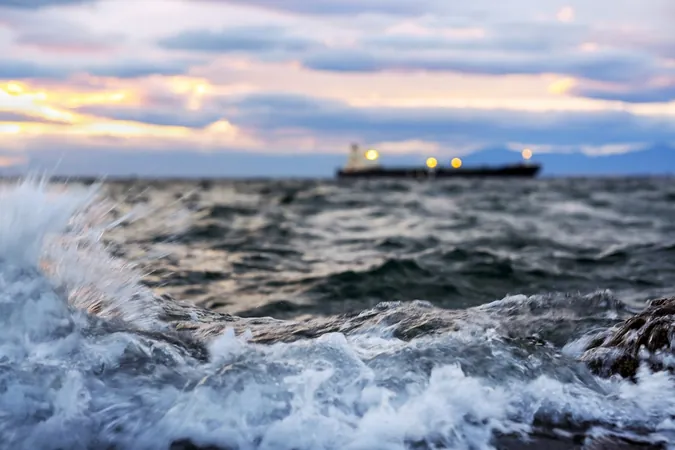
Unveiling the Ocean's Secrets: How Oxygen Levels Fueled Ancient Marine Life
2025-08-25
Author: Michael
Ancient Oceans Transformed by Rising Oxygen
Imagine a world nearly 400 million years ago where the vast, uncharted depths of the ocean were filled with mystery. Recent groundbreaking research reveals that increasing oxygen levels in deep ocean waters drove marine animals into these uninhabited depths, marking a significant evolutionary turning point spurred by the emergence of terrestrial woody plants—precursors to our planet's first forests.
A Crucial Evolutionary Shift
This oxygen surge coincided with an extraordinary burst of diversification among jawed fish, the ancestors of most vertebrates that swim our oceans today. Researchers suggest that this invigorated oxygen environment played a pivotal role in shaping the trajectories of prehistoric evolution. "Our findings strongly indicate that oxygen was a major player in dictating the timeline of early animal evolution, particularly for jawed vertebrates in deep-sea habitats," shared Michael Kipp, co-lead author and assistant professor at Duke University.
Oxygenation Events Redefined
For years, scientists believed the deep-ocean's oxygenation was a singular event from the beginning of the Paleozoic Era, about 540 million years ago. However, new insights suggest these oxygenation episodes were multi-phased, first benefiting nearshore waters before reaching greater depths.
Decoding the Past Through Selenium
Kipp and his team meticulously studied ancient sedimentary rocks, searching for selenium—a key element indicating oxygen levels in ancient seas. By analyzing the isotopic ratios of selenium—where higher ratios signify more breathable environments—they gained a clearer picture of when these oxygenation events occurred.
Discovering Two Major Oxygenation Events
Their findings uncovered two critical oxygenation phases: one transient episode around 540 million years ago, and a lasting increase from 393 to 382 million years ago that has persisted ever since. This second event marked a permanent oxygenation that radically transformed oceanic life and prompted a burst in biodiversity.
The Mid-Paleozoic Marine Revolution
The Mid Devonian oxygenation event, characterized by lasting oxygen abundance in deeper habitats, triggered the emergence and diversification of jawed fish and other marine life. As these creatures thrived, some grew to astonishing sizes thanks to the increased oxygen, forever altering marine ecosystems.
Lessons From History: A Modern Warning
While researchers focused on ancient marine conditions, their insights carry a crucial warning for today. While our oceans currently enjoy a balance of oxygen levels, certain regions are plummeting due to nutrient pollution and industrial runoff, creating dead zones where life struggles to survive. Kipp cautioned, “This research highlights the essential link between oxygen and marine life—a delicate balance established 400 million years ago that risks disruption in just a few decades if we're not careful.”
Conclusion: A Vital Call to Action
As we uncover the intricate connections between ancient oxygen levels and marine evolution, it serves as a stark reminder of the impact that modern human activities may have on our oceans. Protecting and preserving these crucial environments is not just about safeguarding history; it’s about ensuring the future of marine life on our planet.









 Brasil (PT)
Brasil (PT)
 Canada (EN)
Canada (EN)
 Chile (ES)
Chile (ES)
 Česko (CS)
Česko (CS)
 대한민국 (KO)
대한민국 (KO)
 España (ES)
España (ES)
 France (FR)
France (FR)
 Hong Kong (EN)
Hong Kong (EN)
 Italia (IT)
Italia (IT)
 日本 (JA)
日本 (JA)
 Magyarország (HU)
Magyarország (HU)
 Norge (NO)
Norge (NO)
 Polska (PL)
Polska (PL)
 Schweiz (DE)
Schweiz (DE)
 Singapore (EN)
Singapore (EN)
 Sverige (SV)
Sverige (SV)
 Suomi (FI)
Suomi (FI)
 Türkiye (TR)
Türkiye (TR)
 الإمارات العربية المتحدة (AR)
الإمارات العربية المتحدة (AR)